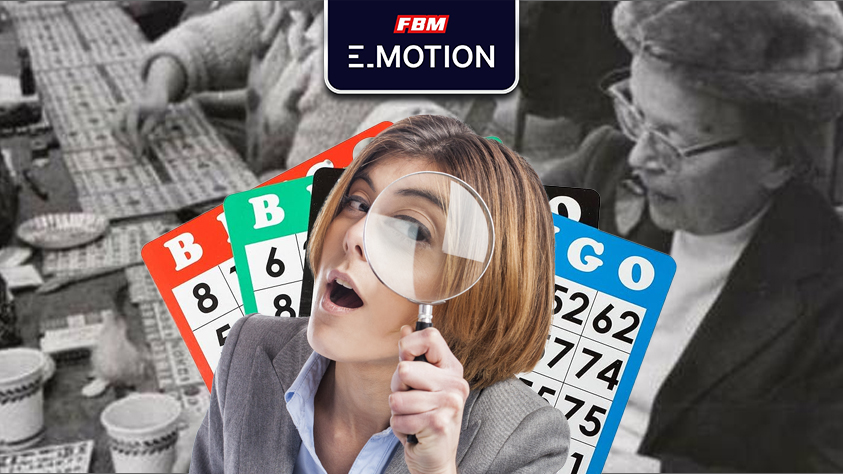If we were to look back to the origin of bingo, then we would need to travel centuries ago. The most popular game of chance in the Philippines that is enjoyed everywhere including online has a long yet fun history. And if you’re wondering about it, we got your back.
Let’s explore another Bingo Plus classic game and discover fun and rewarding opportunities that await you!
Where It All Started
The classic game of e-bingo all started in the 16th century in the country of Italy. However, the game is quite different from the game that we know today. In 1530 when it was first introduced, it was called ‘II Gioco del Lotto d’Italia’ meaning ‘The Lotto Game of Italy”.
It is because the first bingo game was lottery-style. But even before the nature of the game was already simple and straightforward. Players choose numbers that match the winning digit drawn from a drum.
The Following Centuries
After the 16th century where it all began, the game of bingo has become more and more popular and gradually evolved to the game that we know today. To give you a better idea, here’s a more detailed timeline of how bingo evolved until it became the game that you can play here at FBM emotion.
18th Century: From Italy to America
As the 17th century came to a close, a game of chance that had captured Italy embarked on its European journey, landing in the elegant salons of 18th-century France. Renamed “Le Lotto,” the game quickly became the favorite pastime of the French elite. With its sophisticated allure and suspenseful gameplay, Le Lotto transformed from a humble diversion to a highlight of aristocratic gatherings, finding its place in European culture.
1920s: Introduction of Bingo to America
With the culture of innovation comes the “Roaring Twenties.” Not only did “Beano” arrive, a goofy new game in the United States, but with its adaptation at fairs and carnivals, was something rather different from Europe. Combined with the thrilling sense of chance, an atmosphere associated with the time, played by marking cards with beans during calls to numbers, players finally would shout “Beano!” at the end.
This rural, social game stole the hearts of Americans and paved the way for it to become a household name.
1930s: Emergence of Contemporary Bingo
The 1930s was a turning point for toy salesman Edwin S. Lowe when he discovered Beano at a Georgia carnival. A player’s unintentional exclamation of “Bingo!” inspired Lowe to rebrand and perfect the game, creating a phenomenon. Working with mathematician Carl Leffler, Lowe produced thousands of unique Bingo cards to minimize duplicate winners, thereby making the game more appealing. The standardization of the game came in the form of Lowe’s Bingo kits, complete with cards and numbering tools, and Bingo became the norm in social entertainment.
1960s: Popularity of Bingo in the UK
UK Bingo Fever soared across the UK in the 1960s, especially because of the Betting and Gaming Act of 1960. This act legalized gaming, hence paving the way for the rising bingo halls. A format of 90-ball Bingo and the playful use of “Bingo Lingo” were adopted, creating a unique flavor in British Bingo. Phrases like “Two little ducks, 22” added charm and humor, making the game even more engaging.
By the end of the decade, bingo halls had become cultural hubs, blending competition and camaraderie into an unforgettable leisure experience. From its meager beginnings in Italy to a worldwide phenomenon, the evolution of bingo reflects its universal appeal and adaptability. From salons of luxury to busy fairs or lively halls, bingo continues to bring people together by blending luck, excitement, and timeless charm.
The Bingo That We Know Today
It goes without saying that Bingo has been able to stand through the test of time. From centuries ago until now, they delivered the same, or safe to say even overflowing amount of fun and excitement to every player.
Bingo has undergone significant transformations from its primary origins in 1530s Italy. The game’s development into what it has become today reflects its flexibility and staying power. With advancements in technology, bingo easily transitioned into a phenomenon of entertainment and social impact.
Not only did it connect players across the globe, but it also helped popularize online casino gaming. In almost every festival in the Philippines and even in Filipino households, it’s the kind of game that will never be left out.
The early 2010s witnessed the emergence of online bingo. Now, it’s a game that is at every player’s fingertips. All they have to do is to choose a gaming platform like Bingo Plus Online, to get started right away!
FAQs
What is the most popular Bingo game?
The most popular bingo game is the 75-ball game. It is a 5×5 grid of 24 numbers, with the middle square free. It is followed by 90-ball bingo which has a 9×3 grid to play. The game of bingo has a variety of variations, and while all of them have the same goal, they also differ from each other usually in terms of formats and rules.
Why is it called Bingo?
The name ‘Bingo’ that we use today isn’t really the original name of the game. In fact, the exact ‘Bingo’ only came by chance. It is believed that from its original name of ‘Beano’, a player got so excited and shouted Bingo instead. And since Edwin S. Lowe was there, preferring the sound of it, he decided to go with it as he marketed the game.
Why is Bingo so popular?
The popularity of bingo lies behind its simplicity and accessibility. The game is for everyone, whether you’re a beginner or not. The rules are very easy that anyone can understand without any complexities. In the same way, it is widely available and can be played in almost any online casino including Bingo Plus and FBM E-motion.




